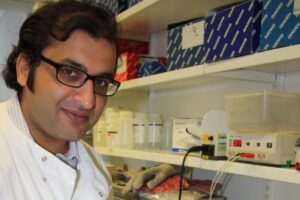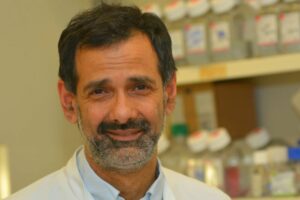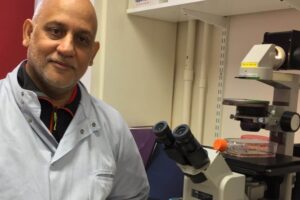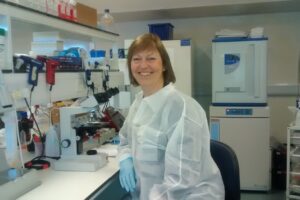Research
DIPG Research: developing new immunotherapy techniques to target currently incurable brain tumours
Diffuse intrinsic Pontine Glioma (DIPG) and other gliomas in children remain some of the most difficult childhood cancers to treat, and new therapies are urgently needed to save the lives of children with these conditions. Survival rates are low, and there has been little improvement over the last 20 years.

Project Details
- TCR-transduced T cells for immunotherapy of paediatric high grade glioma
- Lead Researcher
- Professor John Anderson
- Research Centre
- UCL Institute of Child Health and Great Ormond Street Hospital
- City & Institution Postcode
- London, WC1N 1EH
- Start Date
- 1 March 2017
- Project Duration
- —
- Grant Amount
- £324,203
Diffuse intrinsic Pontine Glioma (DIPG) and other gliomas in children remain some of the most difficult childhood cancers to treat, and new therapies are urgently needed to save the lives of children with these conditions. Survival rates are low, and there has been little improvement over the last 20 years.
But doctors have seen amazing results in trials using immunotherapy to treat some types of leukaemia, and there is evidence that it could provide a new way of treating DIPG and other cancers as well.
But although scientists have developed a new T-cell (a substance which, when introduced to the body prompts an immune response which can attack tumour cells) which may be suitable for targeting these tumours, there remain some major hurdles to overcome before it can be developed into a real treatment.
First, doctors need to be sure that the new T-cell will only target the cancer cells and not the healthy cells surrounding the tumour. Then they need to find a way to get the T-cells into the tumour in a way that they will survive and be able to do their work.
Overview
In the last 10 years, immunotherapy has emerged as a major new opportunity to treat many kinds of cancers, particularly those which are difficult to treat with surgery or conventional therapies. Diffuse Intrinsic Pontine glioma (DIPG) is one of those cancers – a virtually incurable childhood tumour that is characterised by a recurring mutation. Radiotherapy is used to treat children with this condition, but it cannot cure them, and surgery isn’t an option because of where the tumours develop, and the way that they spread into surrounding tissues. Unlike chemotherapy or radiotherapy, which target normal cells as well as cancer cells, immunotherapy with engineered T-cells has the capability to target specific cells, and doctors have found a possible way to identify and target DIPG cells whilst leaving non-mutated cells untouched. This raises hopes for their ability to use immunotherapy to treat this condition in the next five years. A major challenge is to find a way to deliver the therapeutic T-cells in a way that allows them to enter, and survive within, the tumour. In this research project, Professor Anderson (pictured above) and Dr Okada will be looking at ways to get the immunotherapy treatment directly into the cancer.
Potential impact
This project stems from discoveries made in Dr Okada’s lab in California. This international collaborative project will help doctors and lab scientists to further understand and overcome potential barriers for development of safe and effective T-cell therapy in children with DIPG. Because of the expertise within the research teams they will aim to develop what they find in the lab into clinical trials in children. The infrastructure at UCSF and GOSH will enable them to deliver first in child clinical trials of gene and cell therapy, so our aim is to identify the optimal design of a phase 1 clinical trial by the end of the project (24 months) and then go on to carry out the trials; either for separate trials or a single trial in both UK and USA. By doing this we aim to develop a new therapy for DIPG. The ambition of the research team is to bring the K27M TCR to phase I/II trial in paediatric high grade glioma within five years.
About the Research Team
This team has the expertise to develop and deliver a novel and innovative approach to therapy for this most difficult to treat of childhood cancers. Both of the partner institutions have a track record in developing of novel adoptive cell therapies, both in the lab and in clinical trials. At the UCL Institute of Child Health and Great Ormond Street Hospital, Professor Anderson is one of several investigators who have successfully translated preclinical data on gene and cell immunotherapy for childhood cancer through to clinical trial. As a physician scientist, Dr Hideho Okada at University of California, San Francisco, has been dedicated to brain tumour immunology and has led the development of effective immunotherapy for neuro-oncology patients for over 20 years. Dr. Okada is an elected member in the American Society for Clinical Investigation (2010-present).
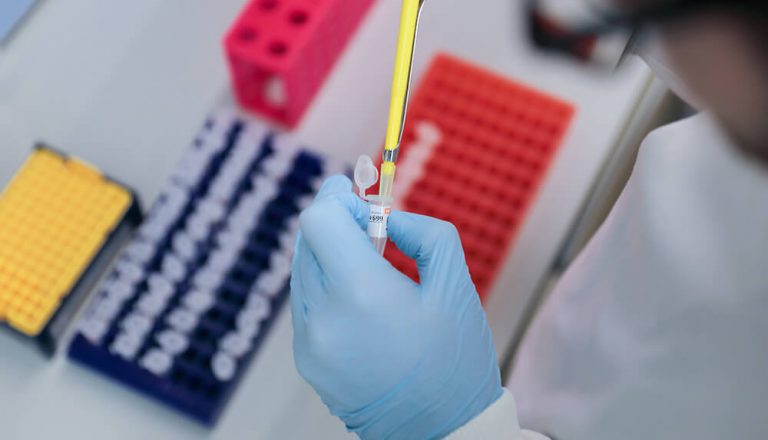
Other stories
We have lots of information to help you learn more about childhood cancer. From specific cancer types, to treatments and causes.

